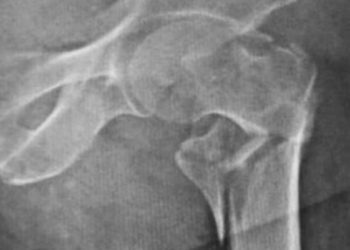Nurse-administered interventions in the community may not reduce the rate of first fall injury
1. When compared to the traditional care approach in older adults, nurse-administered interventions in community dwelling adults were not shown not to significantly lower the rate of a first serious fall injury.
2. The rates of serious adverse events were shown to be similar in the nurse-administered interventions and usual care approach groups.
Evidence Rating Level: 1 (Excellent)
Study Rundown: Falls are the leading cause of injury-related deaths among older adults in the United States. Although evidence from efficacy trials indicate that falls in older adults can be prevented, numerous barriers at the level of health care systems, providers and patients result in sub-optimal implementation of prevention strategies. As such, this study examined the clinical effectiveness of a patient-centered intervention implemented by trained nurses in the primary care setting compared to the current standard of care for fall prevention. The study determined that nurse-administered interventions did not result in a significantly lower risk of first serious fall injury compared to the usual care approach. This randomized trial was limited by the study design based around patient interviews. Because the interview did not occur on a monthly basis, monthly fall ascertainment from patients was unattainable. Nonetheless, this study was strengthened by the presence of large, equally matched groups.
Click to read the study, published today in NEJM
Relevant Reading: Interventions to prevent falls in older adults: up- dated evidence report and systematic review for the US Preventive Services Task Force
In-Depth [randomized controlled trial]: This randomized control trial enrolled 5451 participants across 86 sites in the United States. Included participants were 70 years of age or older, had an increased risk for fall injuries and were community-dwelling individuals. Fall risk was assessed based on the participant’s fall-related injury in the previous year or the participant’s fear of falling due to problems in balance or walking. The exclusion criteria for the study included participants who were unable to provide consent or did not speak either English or Spanish. The patients were randomized in a 1:1 ratio for the nurse administered intervention and usual care approach groups, respectively. The primary outcome of the study was first serious fall resulting in a fracture, joint dislocation, or hospitalization. Information for the fall injuries were recorded every four months through phone interviews by personnel who were unaware of the participant’s treatment group assignment. The rate of a first serious fall injury did not significantly differ between the nurse-administered intervention (4.9 events per 100 person-years) and the usual care approach (5.3 events per 100 person-years, hazard ratio, 0.92; 95% confidence interval [CI], 0.80 to 1.06; P=0.25). Furthermore, the most common type of serious fall injury was bone fractures and related injuries leading to hospitalization. Finally, the rate of hospitalization in the nurse-administered group was 32.8 hospitalizations per 100 person-years and 33.3 per 100 person-years in the usual care approach group. The rate of death related to serious adverse events was 3.3 deaths per 100 person-years in both groups. Taken together, the participants in the nurse-administration intervention did not have a significantly lower rate of a first serious fall injury compared to the usual care approach.
Image: PD
©2020 2 Minute Medicine, Inc. All rights reserved. No works may be reproduced without expressed written consent from 2 Minute Medicine, Inc. Inquire about licensing here. No article should be construed as medical advice and is not intended as such by the authors or by 2 Minute Medicine, Inc.






